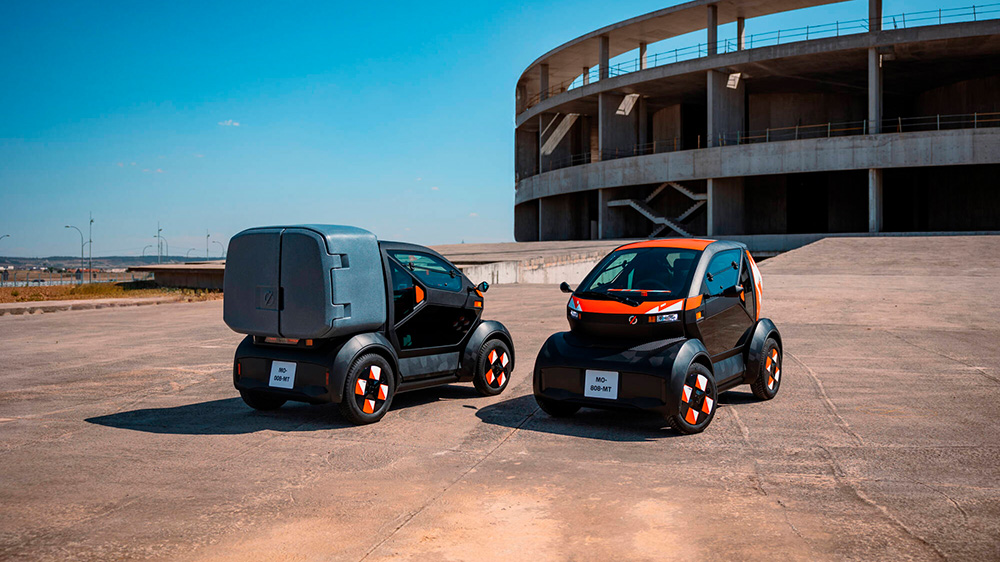As the aviation world undergoes a major existential crisis, Bertrand Piccard, aeronaut, psychiatrist, and president of the Solar Impulse Foundation, is busy holding interviews and roundtable discussions around the possible futures for an industry that’s being forced to reinvent itself. “Let’s not give in to dogmatism or the temptation of naming a scapegoat. If there’s one industry that can rise to the challenge of its own transformation, it’s the aeronautics industry,” he and world aerobatics champion Catherine Manoury wrote in an op-ed for French weekly Le Journal du Dimanche. But it’s not just the future of the aerial industry that Piccard concerns himself with. Lately, he’s got a new interest: the democratisation of hydrogen cars.
Profitable solutions that protect the planet
Dozens of business leaders and top-tier investors have already made their case to European authorities for the necessity of a recovery plan focused on a digital-powered, green transition. “Delivering Europe’s long-term ambition to become the first climate neutral continent by 2050 requires an extensive set of urgent measures to scale up action. From a business and investor perspective, clarity on the net zero transition pathway and timetables for each sector, as well as policy that enables substantial investments in carbon neutral solutions is essential. This in turn would provide us with the confidence needed to invest decisively at the necessary pace and scale to reduce emissions, create decent green jobs, drive innovation, and accelerate the rebuilding of a resilient zero carbon economy,” reads the letter signed by the European directors of companies like Microsoft, Unilever, and even IKEA. Among the signatories listed is a certain Bertrand Piccard—and for good reason: he’s been working hard on coming up with solutions and funding for such a green recovery plan. His foundation, Solar Impulse, is dedicated to presenting decision-makers with profitable solutions that help protect the environment. Today, the foundation boasts a selection of 1,200 solutions, plus 400 bearing an official ‘Solar Impulse Efficient Solution’ label. The selected solutions include sustainable technologies within the domains of air pollution, industrial manufacturing processes, water, agricultural production, and last but not least: mobility.
Carbon-free mobility: and if it was time for hydrogen cars?
When asked about the future of transport, Piccard responds: “Hydrogen-powered mobility is not a solution for the future, it’s a solution for right now. Electrification is the best option for carbon-free transport under 300km. Beyond that distance however, hydrogen is the fuel to use. In California, in Japan, and in France, hydrogen fuel stations are under construction. In Germany, the first hydrogen trains were introduced, replacing diesel trains. Cars, trucks and buses that run on hydrogen are already on our roads, and NASA researchers are exploring the possibility of powering an aircraft with nothing but hydrogen.”
To prove hydrogen’s potential for use in transport, this Swiss aeronaut certainly gives it his all: November 2019, Piccard broke the world record for the distance travelled by a car on a single tank of hydrogen. “Another important advantage of this technology is that hydrogen can make friends where batteries are making enemies,” he says.
The French government has certainly gotten the message. They’ve agreed to invest more than €7 billion of their €100 billion recovery plan in hydrogen energy between now and 2030. “We saw a first wave of electrification with electric batteries. To achieve greater vehicle autonomy of between 500 and 700km, with a record charging time of five minutes, we’ll need another form of electric energy powered by hydrogen,” explained Pierre-Etienne Franc, global director of hydrogen energy activity at Air Liquide, France’s biggest hydrogen produce, speaking to French newspaper Le Figaro.
As Piccard says: “For 20 or 30 years, everyone’s been talking about hydrogen mobility, but no one is actually doing it. Because all this time, anyone who’s tried has found themselves faced with people saying, ‘It’s impossible!’ But ‘impossible’ doesn’t exist in reality—it’s just in our minds, in our beliefs, and in our existing paradigms.” From here on out, thanks to significant investments from Europe, it seems hydrogen is finally being taken seriously, moving out of its adolescent phase and being invited to sit at the table with the adults.
Sarah Sabsibo, L’ADN journalist
L’ADN is the media on innovation that every day analyses the best concepts of the new economy on the web and in magazine format.
Copyrights: Renault Group







